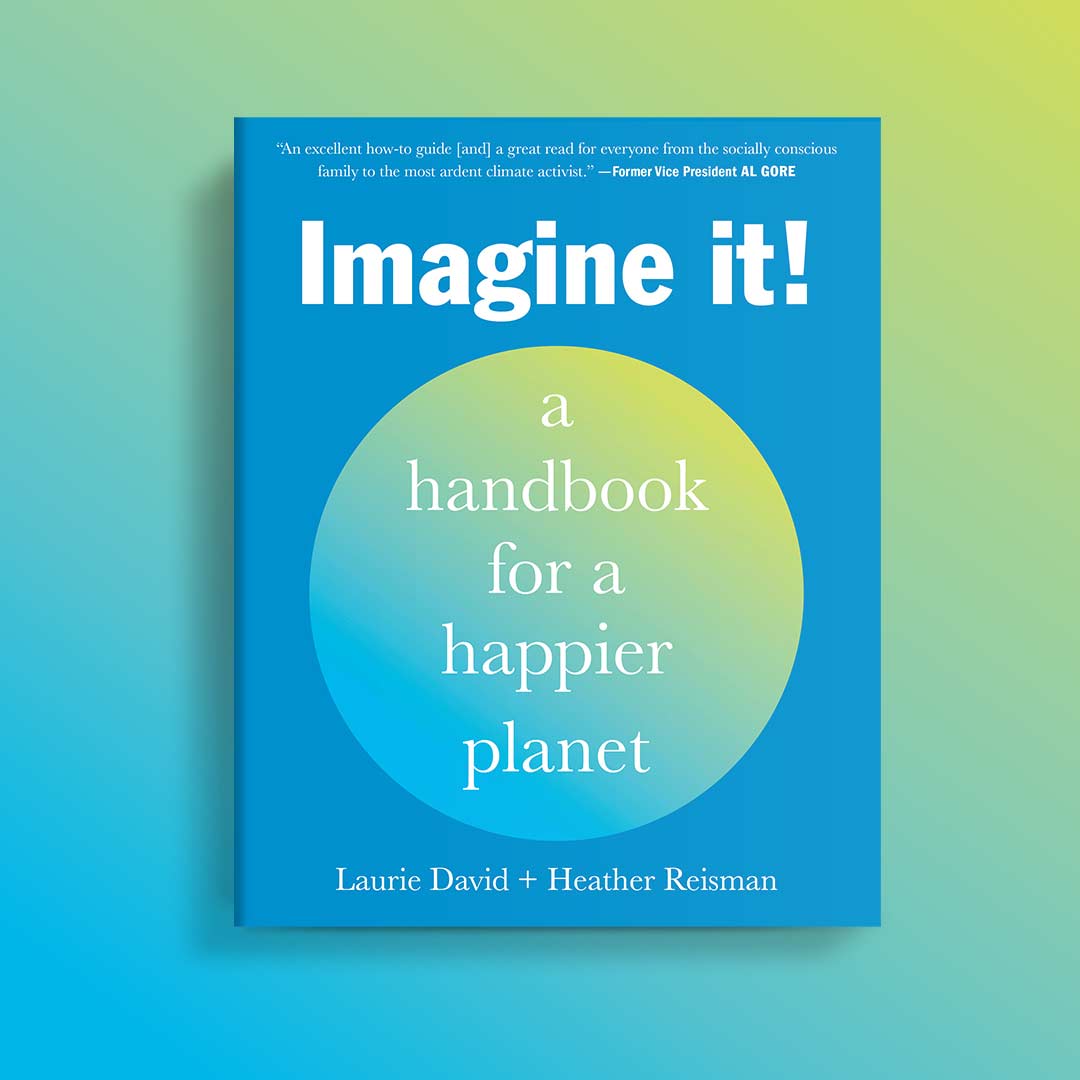In Laurie David and Heather Reisman’s new book, Imagine It!, the authors offer simple ways to replace old, planet-hurting habits with improved sustainable ones. And this week, you can enter for a chance to win a copy! (Find more details on the giveaway here, and see official rules here.)
Arianna Huffington: Heather and Laurie, can you explain for us why you wrote the book?
Our relationship with our planet is in trouble. And like a bad marriage, unless we stop, take stock, and commit to reinvesting, the relationship will break. The truth is, intentionally or not, when it comes to our planet, we have been doing all the taking and none of the giving. We have been filling our oceans with plastic, our air with pollution, denuding our precious forests, dumping chemicals into our bodies, our water and our air, and creating mega landfills with gas-releasing trash.
We have been such bad partners that we are literally altering the climate itself. And we are seeing the impacts every day in the crazy storms, devastating droughts, unprecedented rainfall and ramped up hurricanes. We the people have done this, and we the people have to fix it. We could say: It’s time for some serious couple’s therapy! Imagine It! is our small contribution to support people in re-establishing a positive and loving relationship with our planet.
AH: You talk in the book about the power of ‘connecting the dots’ – of becoming aware of how actions we take -sometimes unconsciously and often by habit – end up creating negative consequences. Give us an example of connecting the dots.
The entire book is filled with examples but let’s look at single use plastic
We use a ridiculous amount of single or short term use plastic. water bottles, straws, razors, utensils, produce bags, dental floss, coffee cup lids, and the list goes on – and on. Shampoo bottles, saran wrap, disposable pens… you get the idea. When we bring these products home and then toss them – or toss them after using them when we are out – we never think that plastic is a made from planet warming fossil fuels. Or that plastic never biodegrades but lives almost forever in landfills or in our oceans. If we could shift our mindset to consider the wake of the products, we might rethink what we are buying and change our habits.The good news is – it is actually easy and rewarding. There are so many good swaps. Changes we can make that are good for the planet, our health, and our pocketbooks! The Chapter on Plastic is filled with great ways to lower your plastic footprint.
AH: You both came at these issues from separate points in your eco journeys. How did that affect writing this book?
Laurie: I have been working on these issues for decades – Heather only for the last 8 years or so. Heather was a perfect partner for me because she kept wanting us to push our thinking to best explain things for our readers that come almost naturally to me at this point. Her curiosity and thirst for understanding made this book richer. We also had the benefit of the NRDC, a hugely respected environmental organization who have been working on these issues for over 50 years.
Heather: I wanted to work on this project with Laurie because she has been my green living coach. And she is the best. She has lived and breathed living environmentally for decades. I felt everyone would want to have Laurie as a personal coach. Her depth of experience helped us to anchor the book in fully authentic ways to make positive change.



